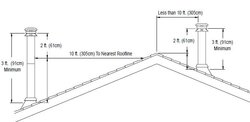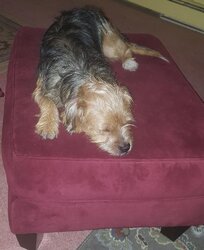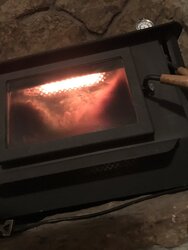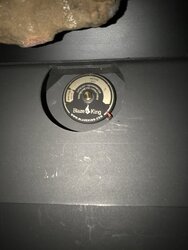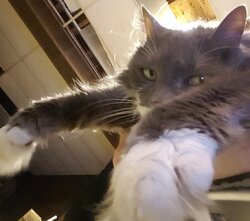kennyp2339
Minister of Fire
When I installed mine I just eyeballed the bottom support brackets, I think there around 8 feet apart end to end supporting 6.5ft of chimney on the roof side. Its as solid as a rock.Question on extended roof support brackets for chimney height over 4-5 feet. My house is fairly small, and the chimney rises out of the roof within about 2' of the ridgeline of a simple gable roof. The support brackets are advertised as having a 60 degree spread,
Great. Thanks.


